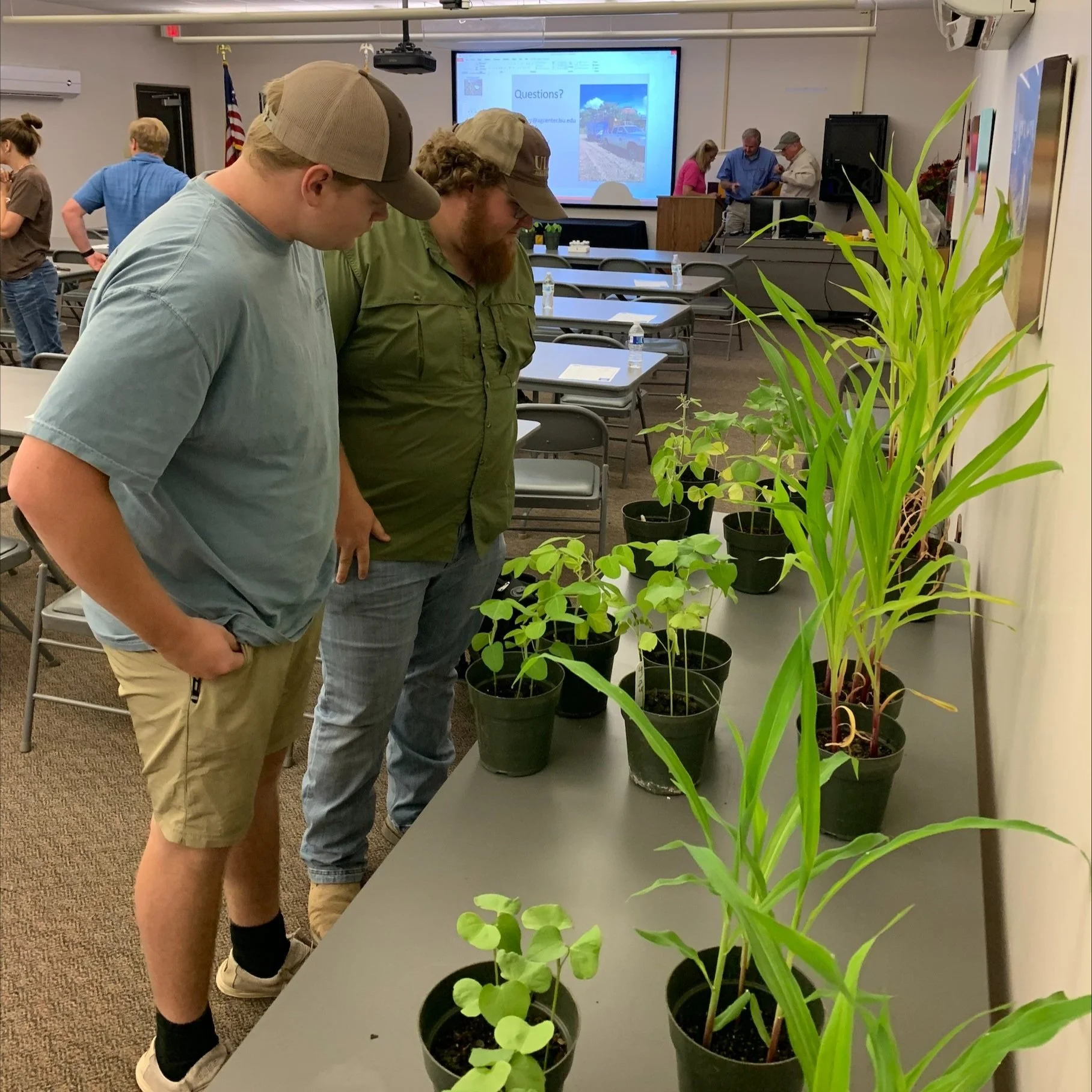With temperatures nearing 90 degrees before 10 a.m., producers from across the state endured the heat and humidity to learn the latest on planting and disease control and to taste unreleased varieties at a commercial vegetable field day June 14 at the LSU AgCenter Botanic Gardens at Burden.
Read MoreIf you find irregular patches of soybean plants that look generally stunted, yellow, or dead, the cause could be nematodes. Generally, nematodes jeopardize the root system of the plant. Therefore, the plants will often have symptoms that mimic other maladies such as drought and nutrient deficiency. It is not uncommon to find nematodes throughout Louisiana. A recent survey (2019-2021) detected Southern root-knot nematodes in 22% of 164 fields.
Read MoreFoliar symptoms are usually not evident until soybean is in the mid to late reproductive growth stages. Initial symptoms are small chocolate brown lesions on the petioles near the leaflet. As the disease progresses, foliar symptoms are expressed as a reddish brown to tan discoloration on the upper leaf surface in the upper canopy.
Read MoreAs anyone in South Louisiana knows, rice is a major part of one’s diet. It is the most widely consumed staple food for more than half of the world’s population, which continues to grow each year. With the production of rice increasing, so does the need for water to grow it. In order to not use up nature’s most precious valuable resource—water—one LSU College of Engineering professor is working with the LSU AgCenter to design a new variety of rice that will be able to withstand drought conditions, making rice production fruitful while not exhausting natural resources.
Read MoreA major goal of the Louisiana Farm to School Act is to promote the use of locally grown and raised foods in school nutrition programs. One avenue to achieve this is for school food service personnel to source ingredients for school cafeteria meals within the state. In doing this, school districts directly support their local economies and community members who grow these products.
Read MoreThe Louisiana County Agricultural Agents Association met in Gonzales June 4 to 7 for its annual meeting and professional improvement conference. The meeting culminated with an awards banquet highlighting the achievements of LCAAA members throughout the year.
Read MoreAn elementary school implements a gardening and culinary program to teach students how to prepare recipes using produce grown in their own school garden through the help of a local farmer.
Read MoreNitrogen (N) is one of the most essential nutrients required for crop growth, development and reproduction. It is the building block of proteins, amino acids, chlorophyll and DNA. Plants require more nitrogen than any other mineral nutrient. Generally, the aboveground portion of the plant contains 3% to 4% nitrogen. Therefore, fertilizing with nitrogen sources is often required for maximizing crop yield and profit.
Read MoreWhile schools were letting out for the summer, the LSU AgCenter was hosting two sessions of Field Crops Insect Scout School to help train crop consultants, insect scouts, extension agents and others on what and how to look for insect pests and damage in field crops.
Read More“He was a bold man that first ate an oyster,” said 18th-century Irish satirist Jonathan Swift. Whether enjoyed fried, grilled, in a seafood gumbo or, perhaps most opinion dividing, raw, there is no denying the oyster’s impact on both Louisiana’s culture and seafood industry.
Oysters have been consumed by humans for thousands of years. Wealthy Greeks and Romans thought of them as a delicacy and an aphrodisiac. While the former is still true in many cultures, the latter is more debatable.
Read MoreWhile schools were letting out for the summer, the LSU AgCenter was hosting two sessions of Field Crops Insect Scout School to help train crop consultants, insect scouts, extension agents and others on what and how to look for insect pests and damage in field crops.
Read MoreThe LSU AgCenter has created a new extension agent position that is aimed at connecting commercial crawfish producers with valuable AgCenter research.
Todd Fontenot will now serve as the AgCenter’s area crawfish extension agent. He said his work in this new role will revolve around crawfish production that is in rotation with rice production.
Read MoreOnce they got started, Louisiana sweet potato farmers made quick work of planting this year’s crop. LSU AgCenter reporter Craig Gautreaux has this report from northeast Louisiana.
Read MoreFor the past two weeks, combines have been harvesting wheat fields across Louisiana. Producers have been pleased with the yields, and some are planting soybeans right behind their wheat crop.
Read MoreA group of more than 100 sugarcane growers, LSU AgCenter researchers and other interested parties assembled at Joby Beaud’s barn in the LaBarre community north of New Roads to hear the latest about new cane variety developments, weed control and other topics.
Read More














